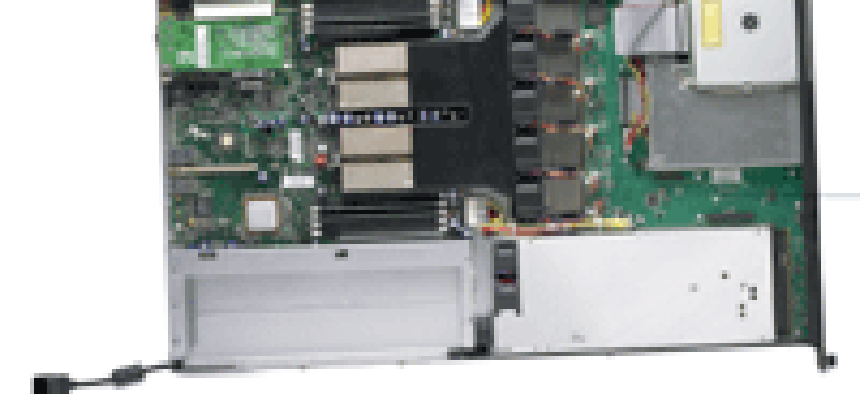The best thing about migrating to 64-bit computing might be that you don't have to do it in one great leap. You can move incrementally with a new class of single- and dual-processor servers using Opteron and Xeon chips.Servers with the new Opterons from Advanced Micro Devices Inc. of Sunnyvale, Calif., or Xeons from Intel Corp. offer simultaneous support for 32-bit and 64-bit applications. This can mean a lot if you want to move up to 64-bit computing but, because of high costs or limited staff, need to keep on using legacy 32-bit operating systems and applications.Clearly, 64-bit computing offers advantages. In the case of system memory, for example, all 64-bit processor architectures incorporate direct access to almost limitless RAM; 32-bit processors have a limit of 4G. And the data paths of 64-bit processors are twice as wide as those of 32-bit processors, so they can manipulate twice the data in the same clock cycle.The fact is, even if your organization doesn't yet require the high-performance benefits of full 64-bit computing, it probably will soon. In the meantime, dual-processor systems like those in the accompanying chart will let you retain 32-bit applications in a mixed environment until it becomes cost-effective to move entirely to a 64-bit environment.Servers based on dual Opterons or Xeons are relatively new. AMD released the first Opteron in 2003, getting the jump on Intel, which had been concentrating on the Itanium 2, a full 64-bit series designed to compete with high-end RISC processors. Intel finally came out with the 32/64-bit dual-processor Xeon last year.The Opteron processor comes in three series: the 100 series (one-way), the 200 series (two-way) and the 800 series (eight-way). Models 240 through 250 of the dual-processor series are listed and priced according to their speed, which ranges from 1.4 GHz for Model 140 to 2.4 GHz for Model 250, AMD's fastest to date.[IMGCAP(2)] All the Opterons are built around AMD64, the company's x86-64 architecture, which extends and enables the x86 instruction set for 64-bit computing while remaining compatible with existing 32-bit applications and OSes.Unlike conventional processor designs, AMD's Direct Connect Architecture lets the Opteron CPU connect directly to system I/O. AMD argues that this design overcomes the throughput bottlenecks inherent in bus-based connections between the CPU and I/O.The Opteron design allows support for up to three coherent HyperTransport links, providing peak bandwidth per processor of up to 19.2 Gbps, or 6.4 Gbps per link.The Opteron's huge 256T memory address space creates a significant performance benefit for applications in which large, or many, data sets are held in memory, according to AMD.The Opteron also offers low-power HE (55-watt) and EE (30-watt) versions, an advantage for environments holding many tightly packed rackmount servers in a small space or for data centers with limited power budgets.AMD recently announced that its entire Opteron processor series will include AMD PowerNow Technology with Optimized Power Management, a power-on-demand technology designed to help systems run at optimum performance and power levels while reducing electricity costs.Intel's answer to the Opteron is the new Xeon processor with an 800-MHz bus. Like the Opteron, it supports both 32-bit and 64-bit applications and comes in a variety of models with speeds up to 3.6 GHz.With features such as HyperThreading, Intel Extended Memory 64 Technology (EM64T) and the fast system bus, Intel is positioning the new Xeon to occupy a perch just beneath its 64-bit Itanium processor line in terms of power and performance.HyperThreading increases processor efficiency by providing thread-level parallelism. EM64T technology lets Xeon platforms be run in three ways: Legacy Mode, which provides backward support for running 32-bit operating systems and applications; Compatibility Mode, which lets 64-bit operating systems interact with 32-bit or 16-bit applications; and Full 64-bit Mode, where maximum extended memory performance is required for 64-bit OSes and applications.SpeedStep is Intel's answer to AMD's PowerNow power-management technology. It uses platform and software power management features to lower average power consumption while maintaining high application performance.In building the accompanying chart, we focused on rackmount designs, as these tend to be more flexible for IT departments exploring the 32/64-bit computing environment.Few mainstream server vendors have yet incorporated the Opteron into their product lines, with the notable exception of Hewlett-Packard, Sun Microsystems and, more recently, IBM. Dell has expressed interest in the technology but has yet to commit to an Opteron product line.Sun recently announced that its new SunV20z servers, powered by two 2.4-GHz Model 250 processors running Solaris, are shattering benchmark records and delivering breakthrough price/performance for databases, application servers, Web servers, compilers and more.Hewlett-Packard also is testing the Opteron waters with its new ProLiant DL145, a 1U rackmount server. IBM Corp. recently unveiled the IBM eServer 326, a 1U rackmount chassis system.A growing number of online vendors will let you configure your Opteron server online. For practice, we 'built' many of the rackmount systems listed in this guide. Try it out yourself by looking for the chassis size and type'tower, 1U, 2U rackmount, for instance'that suit you. Then configure it with the number and model of the processor you want, pick a motherboard, add fast expandable RAM, pop in a graphics controller, RAID controller, CD-ROM or floppy drive, and hard drives.On the Xeon side, the story is similar. Most mainstream companies will let you buy preconfigured versions of these servers or help you configure them to your own specifications and liking.And as with Opteron servers, a growing list of second- and third-tier vendors will help you configure and design your own Xeon server. If you go this route, just be sure to check out the vendor's track record, reputation, and repair and service record before signing on the dotted line. J.B. Miles writes from Honomu, Hawaii. E-mail him at .
Hewlett-Packard Xeon ProLiant DL360
Hewlett-Packard Opteron ProLiant DL145








